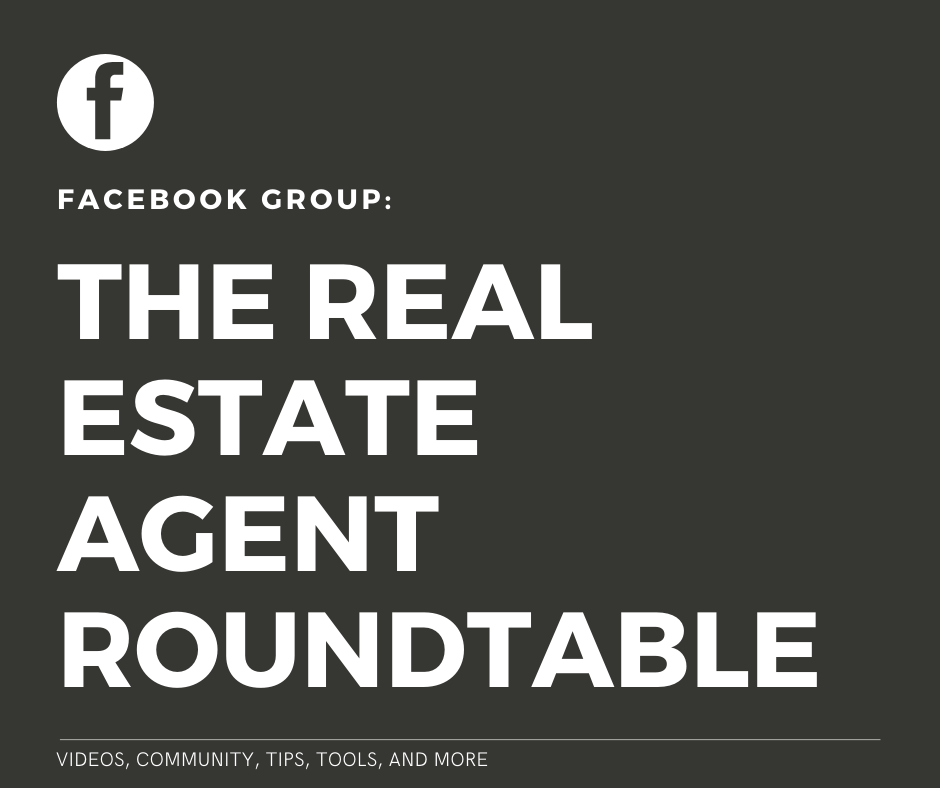Learn how top agents automate their real estate systems to generate more business with less money and effort.
Welcome to the final installment of our PIVOT series, where we’re talking about how real estate agents can automate their real estate systems. So far, we talked about the need for real estate agents to pivot their business and modify it for “turns” in the market.
The Coronavirus crisis has forced a lot of people to embrace technology, whether they liked it or not. We’ve talked about embracing our sphere of influence. Then, we discussed how we can use social media to help enhance our SOI and increase our business. And part three of PIVOT was all about how to make quick marketing videos. Our last post was on video conferencing techniques in place of both in-person appointments and telephone calls.
Now, we’re going to talk about how we automate all of these systems together so that we are able to get all this accomplished in our real estate business. We’re going to set up checklists to make sure we don’t miss a step. We need a process and a system that ensures that we get these things done.
Get Your Real Estate Systems Automated
Automate your contact plan
Especially when you produce at a high level, you’re just not going to remember to do everything every time. Likely, you’ll do what is comfortable instead, which is falling back on what you used to do. The whole point of this series is to pivot our real estate business – to do something new and different. Through the use of a system and a series of processes, we can force ourselves to stay on track.
For those of you that like to have a visual representation, an Excel spreadsheet will get the job done. You can input the forty contacts that you will make throughout the course of the year. Set it up with different categories – in person, social media, print media, phone calls, etc.
Set up your weeks for the entire year. Every single week, map out what you need to do. Know the numbers you’re supposed to hit.
Most of our clients work with different versions of CRMs, but even some of them like to see it on an Excel spreadsheet like that because it holds them a little bit more accountable. You are able to really see what you’re doing rather than just waiting for a notification from your CRM. Sometimes CRMs don’t give you the big annual picture, either. Having a bigger perspective on your numbers is going to help you work on your SOI effectively.

Social media systems
Be diligent about your social media posting and engagement. You can do all of this in that same Excel spreadsheet, too. Make a section and divide it into months. For each month, you can list scheduled posts. You can break it down week by week. If you are running a social media campaign, you can plan your emails to go out at the same time some of your posts are going up.
When it’s automated and planned like this, you don’t have to think about it each week. Simply look in your spreadsheet and see your tasks for the week. And the cool part is that if you set it up one year, you can use it every single year (with small modifications, of course). It will likely take you a couple of hours to put this together.
What happens if you don’t automate?
I’ll tell you right now if you don’t automate you will not be able to keep up with what you intend to do. It is stressful to forget what needs to happen each day. You might try to catch up on tasks and post a bunch of social media posts all at once. The problem with that is that it is not as effective as spreading your posts out over a period of time. It’s also really hard to think creatively under pressure.
A little planning now with real estate systems and automation will save you in the long run. Get your set tasks done each day, and you’ll be less stressed knowing that you’ve got it covered and you’re up to speed.
Be organized with your real estate systems
All of this helps you live in the moment and helps you be a little bit more organized, calm, and present. This will attract clients to you as well. A businessperson should be on top of their game, not constantly chasing it. When you know everything is getting done and you don’t have to worry about it, you will find that you feel more “together” – and people will take notice.
A lot of real estate agents aren’t very “together.” Most Realtors are really good socially, but they’re just a mess when it comes to being organized. By automating your systems, you can really stand out.
When I sold real estate a long time ago, we didn’t even have Excel spreadsheets. We used manila folders. Here at Icenhower Coaching and Consulting, we coach a lot of teams that are using highly sophisticated CRMs. Some of them are very expensive. You could have the most fancy, awesome CRM in the world and not use it properly, or get what you need out of it. Yes, tools are important, but it’s more about how you use them. I know agents that use their Excel spreadsheets more effectively than some use their fancy CRM.

Real estate lead follow up systems: inventory pipelines
Creating these inventory pipelines was crucial during the COVID-19 shelter-in-place order because a lot of Realtors could not do business. Many Realtors could not practice or show property in certain parts of the country, and a lot of people didn’t want to show property because of the risk. Clients didn’t want to have people in their house, so many decided to wait to list their property until later. We had to learn to pipeline business.
You can create inventory pipelines in another simple Excel spreadsheet. Of course you can also set it up in your CRM accordingly. You can create three tabs in your Excel spreadsheet. We have one for “listing inventory,” “buyer inventory,” and “pending inventory.”
Listing Inventory Pipeline
These include all your active listings that you have right now. The listing agreements are signed. They’re just waiting to go active for whatever reason. Maybe they are waiting for a stager or photography or something like that.
Besides your clients with listing agreements, you also have clients in this stage who do not have listing agreements signed. We know that want to sell their home soon, this year at some point. These are the most important people we stay in contact with. We must nurture them.
Any leads we generate during a turn in the market are long term plays. They may not be ready right now but we will nurture them so when they are comfortable again, they’ll come to us for their real estate needs. This is a big reason for us to have these real estate systems in place.
Buyer Inventory Pipeline
The next tab in your lead generation spreadsheet is for your buyer inventory pipeline. These are all people that you have signed buyer exclusive agency agreements with. They’ve agreed to work with you and you have told them you expect them to work with you.
Then you have a list of your active buyer leads. This is the more important part. Here are people you know want to buy a home sometime this year. The most important people you could be talking to after the listing side would be the buyer side.
You will be calling them (or video conferencing with them) regularly to make sure they are not changing their mind about wanting to buy. Show them anything that might help to keep them interested. Provide a virtual buyer consultation appointment. Explain to them your home buying process and get them to agree to that process.
A note about buyer agency agreements
I want to stress this. If you do not get a buyer agency agreement signed or at least have a buyer consultation with a buyer, they won’t feel loyal to you. In fact, the default notion is that they will work with any agent that finds them a home. If you have an expectation you need to tell it to them, which is why a buyer consultation appointment is so necessary.
Pending inventory pipeline
This part of our inventory pipeline is every client you have under contract. You are tracking it to close. Most of you have one of these, so it’s probably not too exciting for you, but this is how we automate our systems.

Our offensive system: real estate systems
All of a sudden, you have your offense in place. You will generate business through your SOI and once that lead is generated, you will nurture it and cultivate it until they become a client through your inventory pipeline. That’s really your whole offensive system right there – the structure of it is simple.
You can always come to us at Icenhower Coaching and Consulting for help with creating these systems and automating them. We represent the majority of the top-producing real estate agents, teams, luxury agents, and brokers in North America for a reason. We’ll help you pick the best CRM systems, and you can take some of these spreadsheets and turn them into full-blown lead generation systems. Or we can help you keep it simple and work with those spreadsheets directly. It doesn’t have to be fancy.

Get to work on your real estate systems
In this PIVOT series, we talked about a lot of cool things you can do to help your business make it through a turn in the market. In order to continue doing these things, you must create systems. Sure, sometimes creating systems and automating them isn’t the most fun, but I will tell you of all the things we taught you in this PIVOT series, it’s the most important.
If you create these systems for your real estate business, I know you’ll be able to keep up with these new tasks. You’ve got the knowledge and you are motivated. You may start doing it immediately, which is also good. But the trick is staying consistent.
If there is anything that I want Icenhower Coaching and Consulting to be known for it’s systems. We insist that our real estate coaching clients set up systems and use them daily. If you put in the work, you are going to pivot and adjust your business into this new technological age. You will make it through this turn in the market. You’re going to generate a lot more business in a lot less time with a lot less money invested because you do these things. Get to work!

Read our latest blogs on similar topics:
- Life Balance for Realtors: How to Build Success and a Life That Lasts
- AI Social Media Content Calendar for Real Estate Agents: Build 30 Days of Posts in Minutes
- AI Newsletter Ideas for Real Estate Agents: How to Write Newsletters Fast with ChatGPT, Gemini & Perplexity
- Real Estate Agent Leadership Coaching Techniques for Goal Setting
- How Real Estate Agents Convert “After the Holidays” Objections Into Appointments

















